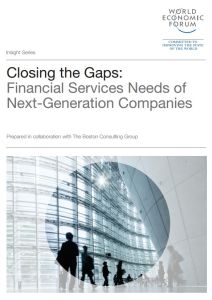Зарегистрируйтесь на getAbstract, чтобы получить доступ к этому краткому изложению.

Зарегистрируйтесь на getAbstract, чтобы получить доступ к этому краткому изложению.
Ranu Dayal, Boripat Louichareon and Isabella Reuttner
Closing the Gaps
Financial Services Needs of Next-Generation Companies
World Economic Forum, 2013
Что внутри?
How can the next generation of innovative companies grow when it lacks access to financial services?
Recommendation
The explosive growth of “next-generation companies” (NGCs) has revolutionized the industries in which they operate. However, financial services have yet to adapt to the new reality these burgeoning firms present. Ranu Dayal of the Boston Consulting Group and Boripat Louichareon and Isabella Reuttner of the World Economic Forum have compiled data and original research to figure out how best to meet NGCs’ financial needs. getAbstract recommends this report to NGC executives, financial services providers, and policy makers and regulators, all of whom have a role to play in improving the financial environment for NGCs.
Summary
About the Authors
Ranu Dayal is a managing director at the Boston Consulting Group. Boripat Louichareon is a project manager at the World Economic Forum, where Isabella Reuttner is an associate director for financial services industries.




















Comment on this summary